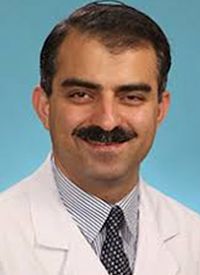News
Article
NT-I7 After CAR T-Cell Therapy Enhances CAR T Factors in R/R DLBCL
Key Takeaways
- NT-I7 treatment post-CAR T-cell therapy is safe and enhances efficacy in relapsed/refractory DLBCL patients.
- The study reported an 81.1% objective response rate, with a 63.6% complete response rate and no severe adverse effects.
NT-I7 with CAR T-cell therapy demonstrated an 81.1% objective response rate in relapsed DLBCL patients and a manageable safety profile.
Armin Ghobadi, MD

Treatment with NT-I7 (efineptakin alfa)—a long-acting interleukin 7 (IL-7) agent—was safe and enhanced CAR T factors associated with efficacy for standard-of-care (SOC) CD19-directed CAR T-cell therapies in patients with relapsed/refractory diffuse large B-cell lymphoma (DLBCL), according to interim results from a phase 1b study (NCT04855283) presented at the 2024 ESMO Congress.1
Findings showed that among patients treated with CAR T-cell therapy followed by 1 of the first 5 dose levels of NT-17 21 days post–CAR T infusion (n =11), the objective response rate (ORR) was 81.1%, including a complete response rate of 63.6% and a partial response rate of 18.2%; the progressive disease rate was 18.2%. The median progression-free survival was 92.0 days, and the median overall survival was 363 days.
Regarding safety, grade 1/2 treatment-emergent adverse effects (TEAEs) related to NT-17 were reported in 54.5% of patients. Notably, no instances of cytokine release syndrome or immune effector cell-associated neurotoxicity syndrome occurred after the administration of NT-17.
"Interim data from this ongoing dose-escalation [study] indicates that NT-I7 treatment post–CAR T-[cell therapy] is safe and well tolerated in patients with advanced DLBCL up to 480 µg/kg [dose level 5]. Additionally, NT-I7 successfully enhances all CAR T factors associated with efficacy when administered at day 21 after CAR T infusion,” lead study author Armin Ghobadi, MD, of the Washington University School of Medicine in St. Louis, Missouri, explained during a presentation of the data.
Study Design and Patient Characteristics
The ongoing, multicenter study is enrolling patients at least 18 years of age with histologically confirmed relapsed/refractory LBCL, including DLBCL not otherwise specified, high grade B-cell lymphoma, DLBCL arising from follicular lymphoma, and primary mediastinal large B-cell lymphoma, who are eligible for SOC CD19-directed CAR T-cell therapy.2 Patients are required to have an ECOG performance status of 0 or 1, a life expectancy of at least 12 weeks, and adequate organ and bone marrow function.
Following screening, eligible patients are receiving SOC CAR T-cell therapy with tisagenlecleucel (Kymriah), lisocabtagene maraleucel (liso-cel; Breyanzi), or axicabtagene ciloleucel (axi-cel; Yescarta) on day 0.1 At day 21, patients are then receiving NT-17 at 60 µg/kg (dose level 1), 120 µg/kg (dose level 2), 240 µg/kg (dose level 3), 360 µg/kg (dose level 4), 480 µg/kg (dose level 5), 600 µg/kg (dose level 6), or 720 µg/kg (dose level 7).Dose levels 1 and 2 were administered to 1 patient each; dose levels 3 to 7 are being administered in a standard 3+3 design.
The study’s primary end points are safety and determining the maximum tolerated dose and/or recommended phase 2 dose of NT-17. Secondary end points including antitumor activity and the effects on NT-17 on CAR T expansion.
As of January 2024, 11 patients were treated at 1 of the first 5 dose levels on NT-17. These patients had a mean age of 66.5 years (range, 49-80). Additionally, 45.5% had stage IV lymphoma at baseline, 36.4% had stage III disease, 9.1% of patients had stage II disease, and stage information was missing for 9.1% of patients.
Furthermore, 45.5% of the patients underwent 4 or more prior treatment regimens; 36.4% had 3 prior lines of therapy, and 18.2% received 2 prior lines of therapy. Most patients (63.6%) had an ECOG performance status of 1 at screening; 27.3% of patients had a performance status of 0, and performance status data were missing for 9.1% of patients.
The majority of patients (n = 9) received tisagenlecleucel. Liso-cel and axi-cel were given to 1 patient each.
Additional Safety and CAR T Data
The most common TEAEs related to NT-17 included injection site erythema and swelling, which were both reported in 18.2% of patients. No grade 3 or higher TEAEs related to NT-17 occurred.
Findings also showed that NT-I7 increased absolute lymphocyte counts, leading to enhanced immune reconstitution. When administered on day 21 following the infusion of CAR T-cell therapy, NT-I7 re-expanded the CAR T-cell population. Although the distribution of CD4 and CD8 CAR T cells did not change, CAR T stemness was increased after the administration of NT-17.
References
- Ghobadi A, Budde LE, Stermer K, et al. Phase Ib study of NT-I7 (efineptakin alfa), a long-acting IL-7, post-CD19-directed CAR T cell therapy in diffuse large B-cell lymphoma (DLBCL). Ann Oncol. 2024;35(suppl 2):s599. doi:10.1016/j.annonc.2024.08.857
- Relapsed/refractory large B-cell lymphoma with NT-I7 post-CD19 CAR T-cell therapy. ClinicalTrials.gov. Updated February 22, 2024. Accessed October 7, 2024. https://clinicaltrials.gov/study/NCT05075603









